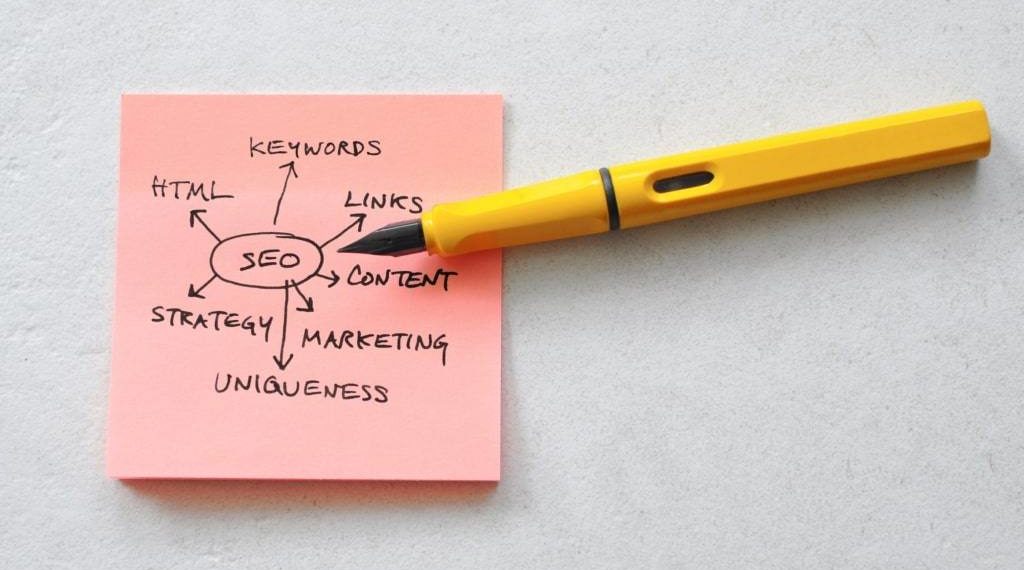Search Engine Optimisation (SEO) is too often considered as a side goal in redesigns. However, SEO can turn out to be an incredible driving force if correctly directed.
We asked two experts their opinions: All throughout this post, Nicolas Gallet Ducaroy, SEO Product Manager at CANAL+, and Lamine Taguine, Head of Growth Marketing at Wemanity Digital, will deliver their vision, advices and tips to make your SEO redesign a success.
1. The Many Reasons and Ultimate Beneficiaries of an SEO Redesign
A website redesign can be a major reworking for the entire entreprise, with motivation coming from many possible reasons:
- The website doesn’t reach performance criteria set by the entreprise: Traffic, lead acquiring, sales, etc.
- User experience is getting old, the customer path needs to be improved.
- The technical infrastructure no longer answers to the entreprise’s needs and/or new standards required by search engines.
- The brand identity evolved (e.g. a change or merger of brands/products) and the website must be a driving force of this new identity, etc.
A redesign is most of the time a delicate operation, requiring to be cautious and methodic. Putting the SEO component aside could cost a lot eventually, as it is a powerful lever to better understand your audience… and reach business goals.
The ultimate stakes of an SEO redesign will be to better match visitors’ needs while reaching the requirements set by search engines.
2. Checklist: The Key Stages of an SEO Redesign
Lamine Taguine and Nicolas Gallet Ducaroy will guide us through the essential roles the SEO plays throughout a website redesign.
1. Identify the goal of the redesign
A vital step of the redesign will be to clearly define its goal(s). What are the most important stakes of the brand? Answering this question will highlight the SEO strategies to activate.
For Nicolas Gallet Ducaroy, an essential question must be answered at that stage: What does the user need? The analysis of audience searches and their behavior flux on the website will be an absolute go-to for a start:
‘’It’s the first step: Understanding what the visitor wants, the reasons for it and the way those are expressed. What are their underlying intentions? What is their problem and how can we bring a solution in terms of brand, products, offers, contents, and services?’
Nicolas Gallet Ducaroy
2. Analyse the current framework
The second step will consist in analysing the editorial framework in order to adjust it according to the entreprise’s goals and the audience search requests:
- What are the existing contents which already answer to the user’s needs on the website?
- Which contents must be optimised?
- Which contents must be produced to answer to unanswered needs?
Nicolas’ advice: analysing search engine result pages on key words and analysing competitors will be essential to find the website’s missed opportunities
Lamine stresses that analysing existing content also allows to set out arguments for modifications in the user path to be applied during the eventual redesign:
‘’With my team, to justify our recommendations on new page- templates, we run A/B tests. Results of such tests are precious for UX teams who will work on the new interface draft’’
Lamine Taguine
3. Define functional and technical specifications
Technical themes are not only the matter of the development team. The SEO taking part in the definition of specifications is even a key factor in a redesign’s success.
Indeed, defining specifications together will allow to anticipate problems from the earliest stages in the creation of some functionalities or technical deployments. The type of technology used in a redesign may hinder a good indexation and therefore a good content visibility.
Nicolas explains it’s a way to make sure of the contents usability:
‘’The SEO’s role is also to make sure that the website is accessible, technologically speaking. A strict respect of HTTP, URL, and HTML standards is really the base, but however, many people forget about this.’’
Nicolas Gallet Ducaroy
4. Create the new browsing experience
The inclusion of SEO at the stage of browsing experience creation will allow to reach the best visibility possible for the website’s content.
Crafting a new tree structure jointly by UX and SEO will allow to create a meaningful interface which will adapt perfectly to the user’s research path.
The analysis of templates and interface components by the SEO will also be useful recommendations on alternative, SEO-friendly browsing experiences and HTML markup before launching development.
5. Build the migration and redirection plan
Every modification of URLs (change, suppression, etc.) must be carefully prepared.
Lamine confirms:
‘’A badly managed redirection plan is the perfect recipe for a failed redesign. It’s a crucial issue for search engines, as well as for user
experience, as highlighted by Nicolas: When we launch a migration, we better accompany the user. I would advice to warn rather than impose. It’s like when we’re moving out: We warn about the address change.’’Lamine Taguine
Preventing migration failures requires a meticulous preparation through a precise methodology, which will include a technical and operational plan. It also requires a communication phase during which every project stakeholder’s role for this stage will be explained.
6. Test and stage
You can run pre-tests in an environment distinct from the production’s, allowing to check implemented changes and see their concrete impact on the website.
Tests will need to run again once the website is online, on all recommendations that have been worked on since then: HTML markup, implementation of the redirection plan, etc.
7. Communicate
When production is launched, it’s important to communicate changes to Google thanks to their indexation API. Thanks to this update, the search engine will plan a new exploration of the website’s pages, therefore allowing for a faster indexation.
Beyond Google, Nicolas also suggests to have a communication plan following the website’s redesign. Depending on the entreprise’s goals, there could be a real added value.
8. Track SEO performances
The new website is online and we may think work on SEO is now over, but let’s not forget a crucial element: Tracking.
After launching production, you must:
- Have a follow-up of implementations through time for those which were not prioritised during the redesign, while not forgetting post-launch technical studies of the website.
- And naturally, track SEO performances.
3. Tips for a Successful SEO Redesign
Put the user’s needs at the core of the redesign
That is the absolute #1 advice from our experts: The core of a successful redesign will be to ‘’match the user’s needs, whatever the moment of their search.’’
You must be able to suggest content all through the sales funnel, and not only on the purchase page:
- Ahead of the purchase, when the user is looking for information, identifying the problem, discovering a solution, or comparing a product;
- After the purchase, for every question they might have on the product’s usage, its functioning, installation, etc.
‘’Those are core subjects, but we often forget or don’t prioritise them. This purely means that we forget the user in their browsing path. A brand (or a product) present at every moment of the research will stay in the user’s mind when eventually purchasing.’’
Nicolas Gallet Ducaroy
A redesign in iterations instead of an all-at-once approach
Instead of having a deep redesign from A to Z, ‘’you’ll better have a redesign by iterations,’’ shares Nicolas. ‘’Increments on a website should be ongoing: A total redesign should be replaced by partial, progressive, and iterative redesigns.’’
On his side, Lamine explains that, once the website’s new version is online – even for massive redesigns -, a second SEO work starts: The website’s animation. The website should be animated, and new releases should therefore be planned all throughout the year.
Work hand in hand with other teams
According to Lamine, collaboration between the SEO and the other teams involved in the redesign (marketing, UX, development, etc.) is essential:
‘Search engine optimisation is a component to include everywhere: Before, during, and after the redesign. Having a multidisciplinary approach with SEO is making sure the redesign will be a success.‘
Lamine Taguine
Nicolas adds the minimum would be for the redesign teams to be made aware of SEO stakes, or even to organise workshops or mini-trainings. It’s important they understand ‘’why such or such action will be made, why they will be prioritised in such or such way, why such subject is prioritised over another regarding global performance goals.’’
At Wemanity Digital, we offer you skills from a multidisciplinary team, whose members are all experts in their fields and fully capable to accompany you at every stage of you redesign.
Open perspectives for new content
Doing SEO without text, it’s possible. This statement from Nicolas may surprise you… however:
‘’The emotion we provoke through our content is the main key to increase a website’s visibility on Google thanks to a natural popularity. In that way, you must be able to complete your editorial line with other things than plain text.’’
Nicolas Gallet Ducaroy
Depending on the user’s underlying need in their request, the answer might not be systematically some text, and Google knows it well. To gain a good ranking, text content can’t be the absolute answer. The development of video content is an indisputable proof.
Finally, the core question of the SEO is really to understand the user’s intention behind the expression of their needs, and to bring an adapted editorial answer.
Bonus: FAQ on the SEO redesign
When there is decrease in the activity, for example during summer (with the season to be adapted to the entreprise’s activity).
Beyond that, if you work in iterations, there’s not a really a good or a bad moment… except Friday afternoons!
Performance analysis tools: Google Search Console, BigQuery, Google Analytics, …
Testing tools: Google Optimize (for A/B testing)
Crawl tools: Screamingfrog.onCrawl, Sitebulb (more complete)
Redirection tools: Getredirects
Thinking the SEO is just a detail of the redesign.
Not considering the user’s needs.
Not considering the existing content.
Developing the new interface with content which is not in accordance with reality: Fill
the drafts with lorem ispum can lead to bad surprises once the website is online…












